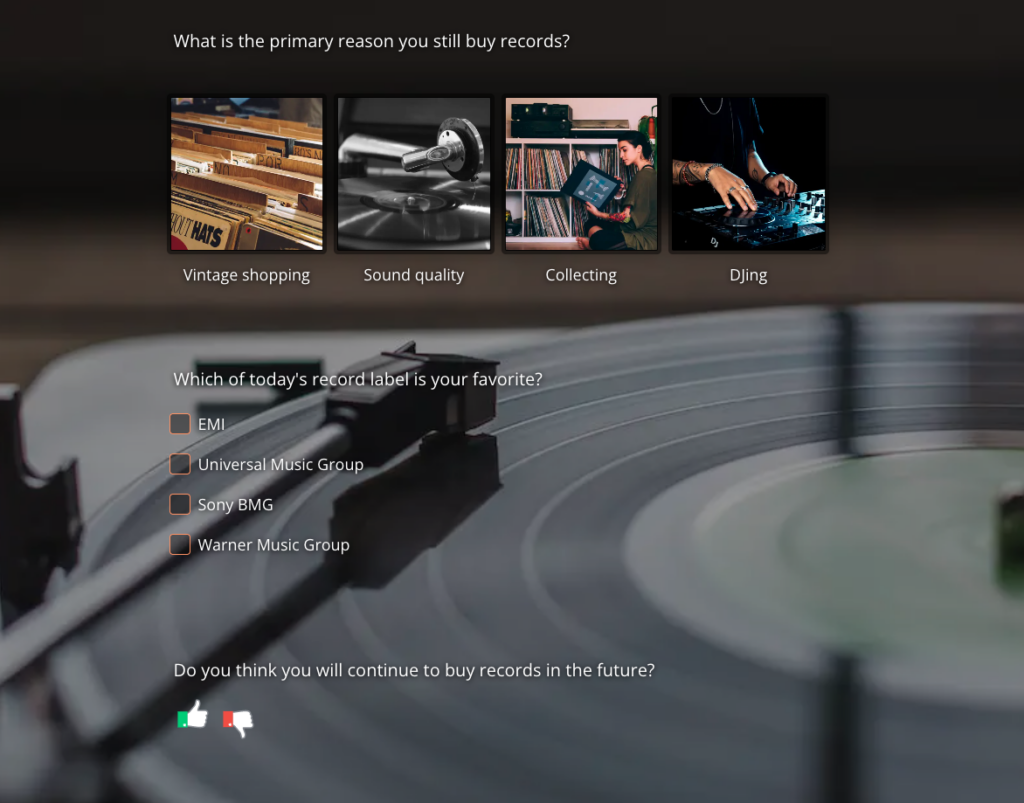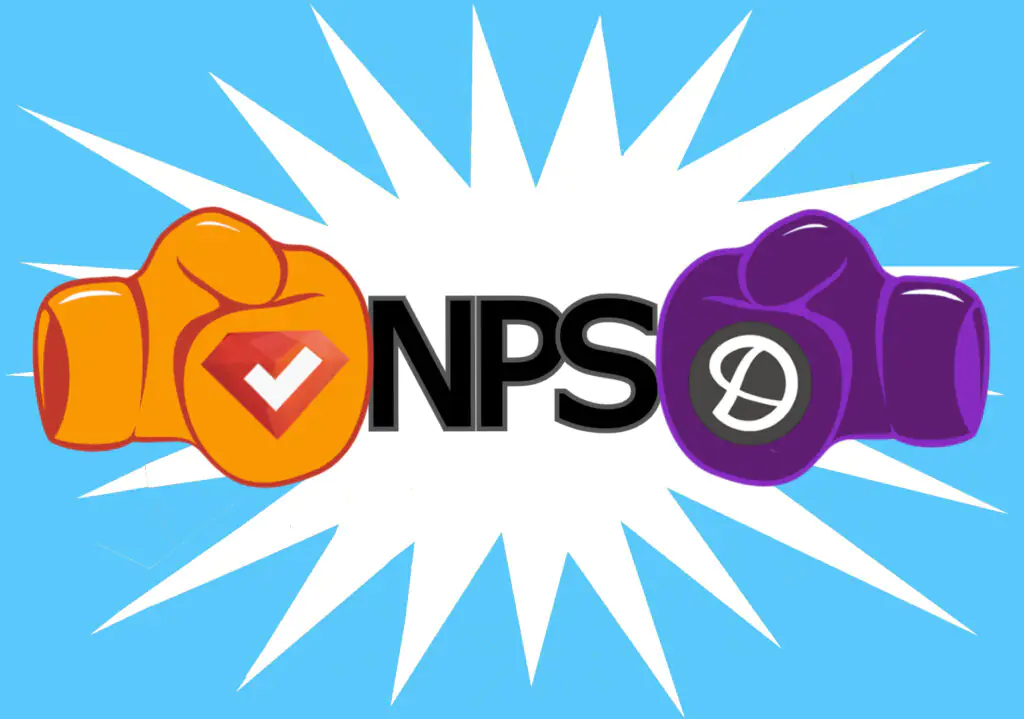The automobile has been an enduring presence throughout multiple centuries. Then, you have the VCR, which came and went in a matter of decades. Regardless of a product’s life span, it will go through a product life cycle – some just go through that cycle quicker than others.
During the product life cycle, surveying consumers is a crucial aspect of understanding their needs, preferences, and experiences with a product. Conducting surveys at different points throughout this lifecycle allows businesses to gather valuable insights and make informed decisions to enhance their products and meet consumer expectations. In this blog, we will delve into the significance of surveying consumers throughout the product life cycle and explore the benefits.
Create your FREE product lifecycle survey, poll, or questionnaire now!
What is a Product Life Cycle?
The product life cycle is an economic concept developed by Theodore Levitt, a prominent German-born professor who taught at the Harvard Business School. His product life cycle, which he published in 1965, states that a product goes through five distinct stages: development, introduction, growth, maturity, and decline. There can be exceptions, such as resurgences in popularity. But, for the most part, the product life cycle looks at the time period from a product’s introduction to its eventual market withdrawal.
Five Stages of the Product Life Cycle & Survey Examples
Here is a closer look at the five stages of the product life cycle with survey examples for each.
1. Product Development Stage
This first stage in the product life cycle is also known as the pre-launch stage because your product has not yet gone to market. This is when your team will be busy concepting, testing, and creating a go-to-market plan. Just because the product hasn’t hit the market yet, however, doesn’t mean you shouldn’t be surveying. Instead, use surveys to gather feedback on the following:
- Functionality. Learn whether people understand how to use/engage with the product or if they are finding it difficult or confusing.
- Messaging. Test your messaging and product claims with potential customers.
- Packaging. Discover whether consumers find the packaging and branding appealing.
- Advertising. Find out of your advertising, and the medium you use, is connecting with people.
- Pricing. Identify the optimal price point for your product.
During the product development stage, surveying consumers can provide invaluable insights that shape the product’s features, design, and functionality. By collecting feedback through surveys, businesses can assess potential demand, understand consumer preferences, learn about the perceived value of the product, and identify potential barriers to adoption. These insights enable businesses to optimize their launch strategies, enhancing the chances of success in the market.
Surveying During Product Development
Lastly, you surveying at the pre-launch stage helps you better target the right demographic. You may have gone into this thinking the product would be aimed at a certain demographic, say middle-aged men, only to learn that younger generation women find it most appealing. This can all help you to refine your marketing messages and platforms.
2. Product Introduction/Launch Stage
Now, it’s time to launch the product! This is when your team will be building product awareness and reaching out to your target market. Typically, all content marketing and inbound marketing are based on promoting the product. This stage can become quite involved depending on the complexity of the product, the competition, how new and innovative it is, and other factors.
Surveying During Product Introduction
Surveying at this stage is meant to reconfirm the information you sought out in the development stage. Your survey will be similar, asking about functionality, messaging, packaging, pricing, and so on, only now you’ll be speaking with actual purchasers of the product. And, as actual paying customers, it’s possible that they may feel differently than your test audience meaning it could be time to refine some or all of the above.
3. Product Growth Stage
Now that you’ve (hopefully) captured the attention of the market, it’s time to establish your brand presence. This is when you want to tell consumers why they should choose your product over your competition (better quality, more features, lower price, and so on, depending on your brand messaging). All of these efforts should be prominently featured in your marketing.
Surveying During Product Growth
The growth stage is also a great time to send out ongoing online surveys to identify emerging trends, track customer satisfaction, and monitor the product’s performance. Regularly surveying consumers enables businesses to gather real-time feedback on product usage, identify areas for improvement, and make necessary adjustments to meet evolving consumer demands. This feedback loop contributes to the product’s continuous improvement and ensures its relevance in a dynamic market landscape.
It’s also important at this stage in the product life cycle to survey consumers about your brand. This can be accomplished through brand tracking, a process for measuring brand perception over time. Brand tracking surveys typically look at brand awareness, brand association, and brand consideration. Read more about brand tracking surveys.
4. Product Maturity Stage
No longer a baby or young buck, your product has entered middle-age. During the maturity stage, sales tend to be steady causing many marketers to rest on their laurels. Don’t make that mistake, especially if sales begin to dip, often due to market saturation. To avoid entering the product decline stage prematurely, continue to market your product but focus less on awareness and more on differentiation, such as features, price, or name recognition.
Surveying During Product Maturation
At peak market penetration, surveys become instrumental in maintaining customer loyalty and staying ahead of the competition. By surveying consumers, businesses can gauge satisfaction levels, identify opportunities for product diversification or differentiation, and assess brand perception. These insights empower businesses to adapt their strategies, introduce enhancements, or explore new market segments to extend the product’s lifecycle and sustain profitability.
5. Product Decline Stage
It happens to the best of products – the eventual decline. This may be caused by loss of consumer interest, too much competition from products with similar features, a declining brand image, or outdated or replaced product (e.g., VHS tapes being replaced by DVDs, and then DVDs being replaced by streaming entertainment). Of course, if a product is one of the lucky ones, there may be a “product resurgence” stage, in which a declining product finds a whole new audience. For example, clothing and apparel. Often, old styles and brands will have a resurgence, as something once dated becomes cool again or gains retro appeal.
Surveying During Product Decline
Surveys play a crucial role during this phase by helping businesses understand the reasons behind the decline and explore possibilities for repositioning or revitalization. Through consumer surveys, businesses can identify pain points, uncover consumer preferences for potential improvements, and gauge receptiveness to repositioning strategies. These insights guide businesses in making strategic decisions, such as product modifications, targeted marketing campaigns, or even discontinuation if necessary.
To avoid a free-fall, companies may expand the product line or its flavors, repackage the product, try new pricing strategies, launch new versions of the same product, and so on. Some marketers even decide to attempt a rebrand at this stage to inject a shot of adrenaline into sales. If you go this route, be sure not to make these 7 rebranding mistakes.
Benefits of Surveying Consumers Throughout the Product Life Cycle
Here, in a nutshell, are the top reasons for surveying consumers throughout the product life cycle.
Taking a More Customer-Centric Approach
Customer experience, or CX, is more important than ever. Surveying consumers throughout the product lifecycle places the focus on the customer, allowing businesses to align their strategies with customer needs and preferences. This customer-centric approach enhances customer satisfaction and increases the likelihood of product success.
Making More Informed Decisions
By collecting feedback at different stages, businesses gain a comprehensive understanding of consumer perceptions, preferences, and behaviors. This knowledge equips them with the necessary insights to make informed decisions regarding product development, marketing strategies, and business growth.
Gaining a Competitive Advantage
Surveying consumers throughout the product life cycle provides a competitive advantage by enabling businesses to stay ahead of market trends, address consumer concerns promptly, and adapt their offerings accordingly. This proactive approach ensures a better position in the market and enhances long-term sustainability.
Enhancing Product Development
Surveys empower businesses to fine-tune their product offerings, identify gaps in the market, and develop new features or innovations. By incorporating consumer feedback, businesses can create products that align closely with consumer expectations, resulting in higher customer satisfaction and loyalty.
Driving Continuous Improvement
By maintaining an ongoing dialogue with consumers, businesses can continuously improve their products. Regular surveys allow for iterative refinements, enabling businesses to respond to changing consumer demands and preferences effectively.
Example of a Product Life Cycle and a Product Survey
Let’s take a look at a product life cycle in the real world and how a product life cycle survey would help along the way. Let’s take a product that has truly had a roller coaster ride of a product life cycle: The record player.
- Development (1877-1887): Thomas Edison invents the phonograph, which Alexander Graham Bell improves upon. Finally, Emile Berliner takes it to the next level, creating the “gramophone” which becomes the basis for the record player.
- Launch (1885-1899): The record player is released to the masses and becomes quite popular.
- Growth (1900-1940s): Record players continue to grow in popularity. The introduction of the radio in the 1930s provides some competition, but sales remain steady.
- Maturity (1950s-1970s): Improvements in record players make them more popular than ever, with most households owning one or more.
- Decline (1980s-2010s): The rise of cassette tapes and then CD players put the sales of record players on a steep decline except with vinyl enthusiasts and DJs using them as turntables.
- Resurgence (2020s): Who would’ve thought? Despite competition from streaming entertainment, record players make a comeback in the mainstream, with major artists releasing their latest albums as LPs allowing generations young and old to experience this 100 year old technology in their homes today.
Below is a product lifecycle survey that could be delivered to consumers online created using SurveyLegend.

Conclusion
Surveying consumers throughout the product life cycle is a powerful tool for businesses seeking to deliver products that align with consumer needs and preferences. From the product development stage to the decline or repositioning stage, surveys provide valuable insights, foster customer engagement, and guide strategic decision-making. By embracing a customer-centric approach and leveraging the benefits of consumer surveys, businesses can enhance their products, foster customer loyalty, and maintain a competitive edge in the market.
Ready to begin your product life cycle surveys? Start today with SurveyLegend! We offer beautiful, secure, and engaging online surveys that consumers will enjoy taking!
Create your FREE product lifecycle survey now!
Frequently Asked Questions (FAQs)
The product life cycle concept was developed by Theodore Levitt, a prominent German economist and professor at the Harvard Business School, in 1965.
The five stages of a product lifecycle are development, launch, growth, maturity, and decline. Occasionally, a sixth category considered “resurgence” occurs, such as with vinyl records.
Consumers attitudes toward a product change throughout the product lifecycle. By surveying throughout the stages, marketers can gain insights that could lead to refined messaging, different price points, new packaging, new features, better functionality, and more.




